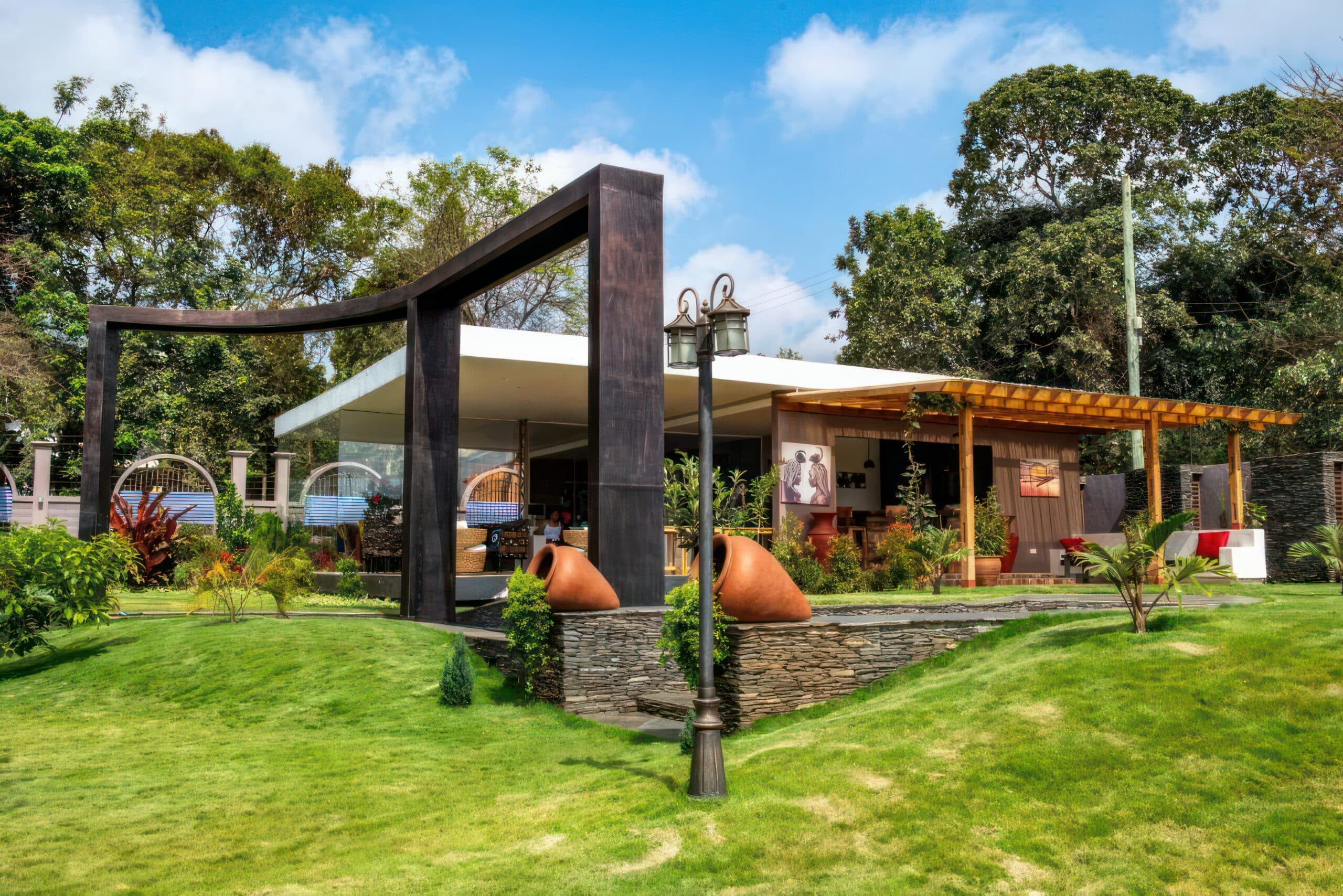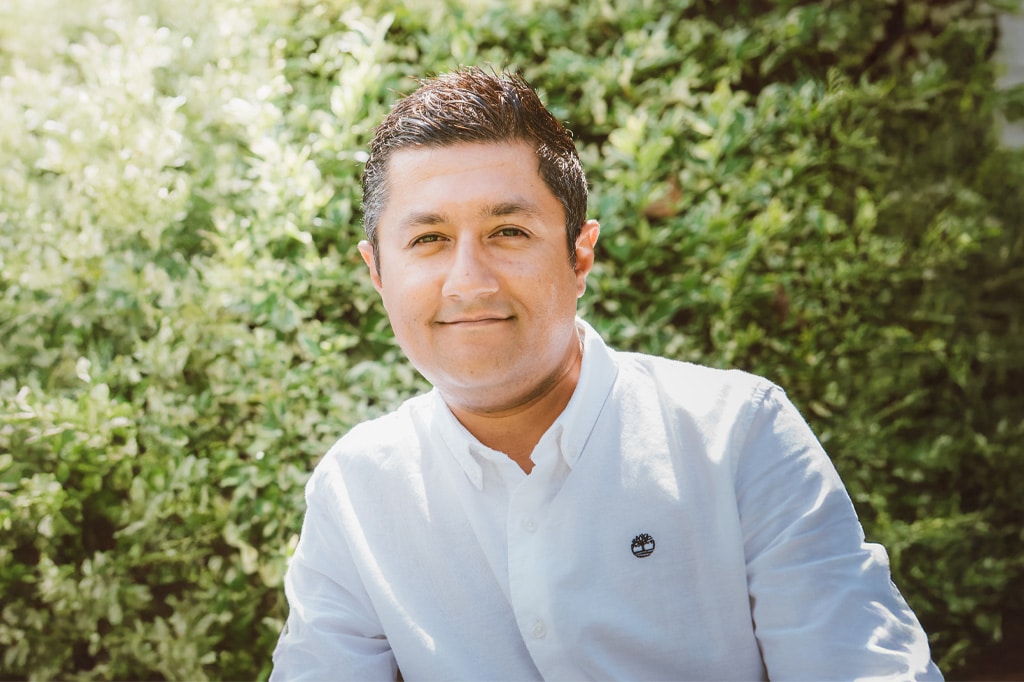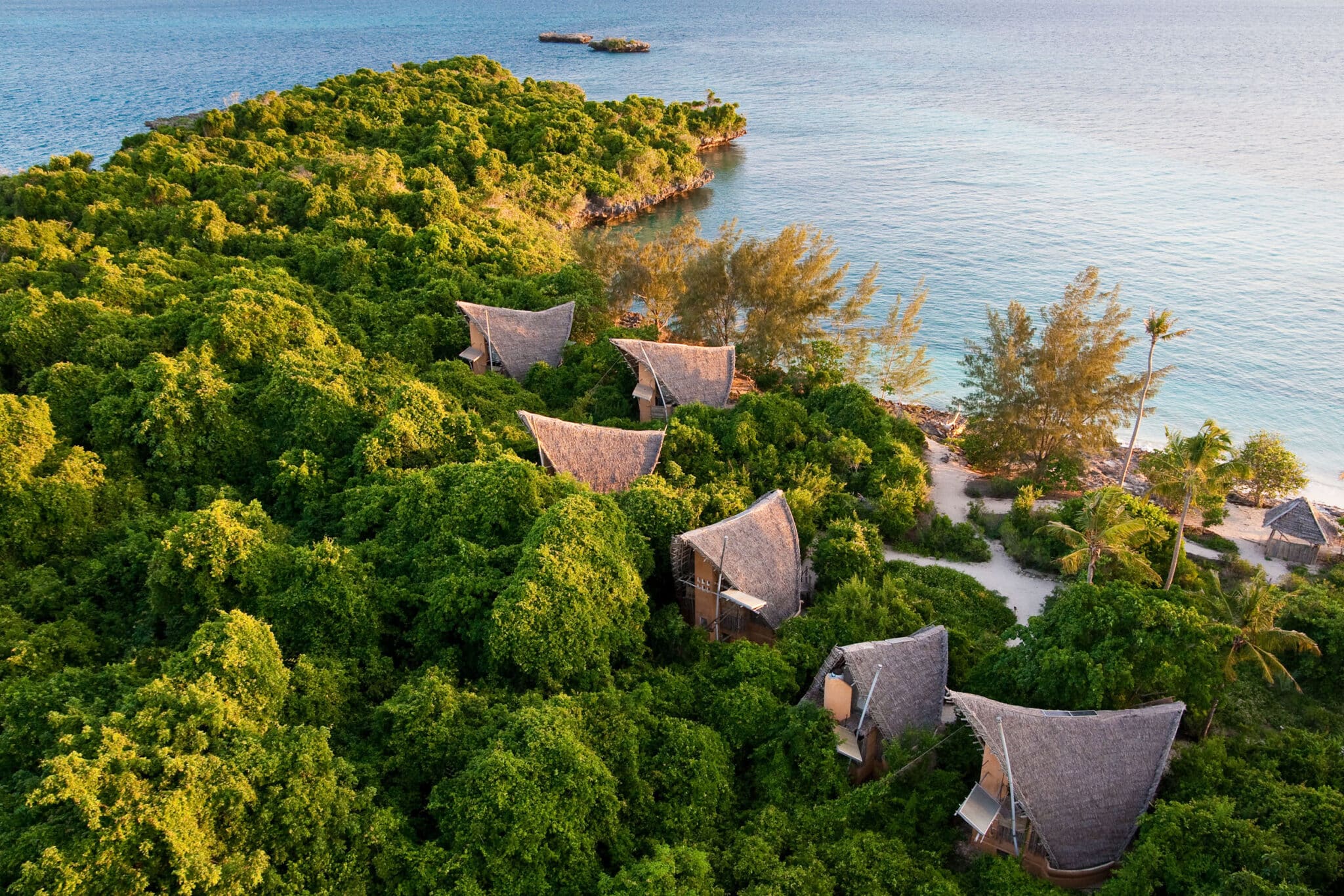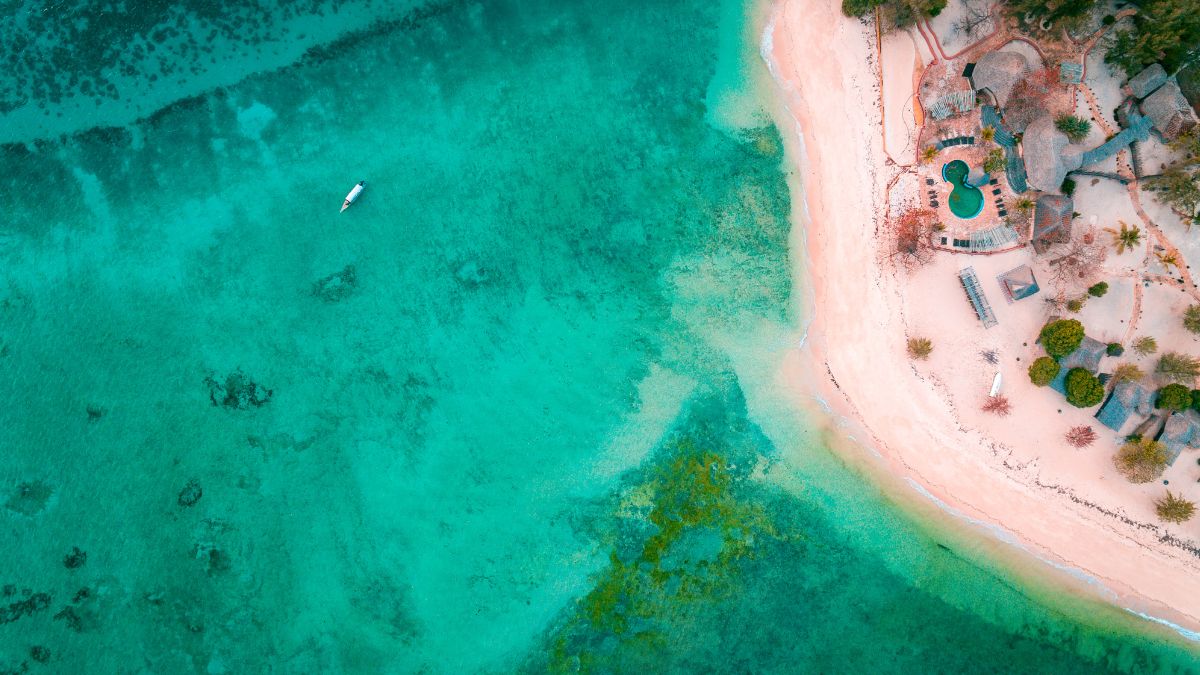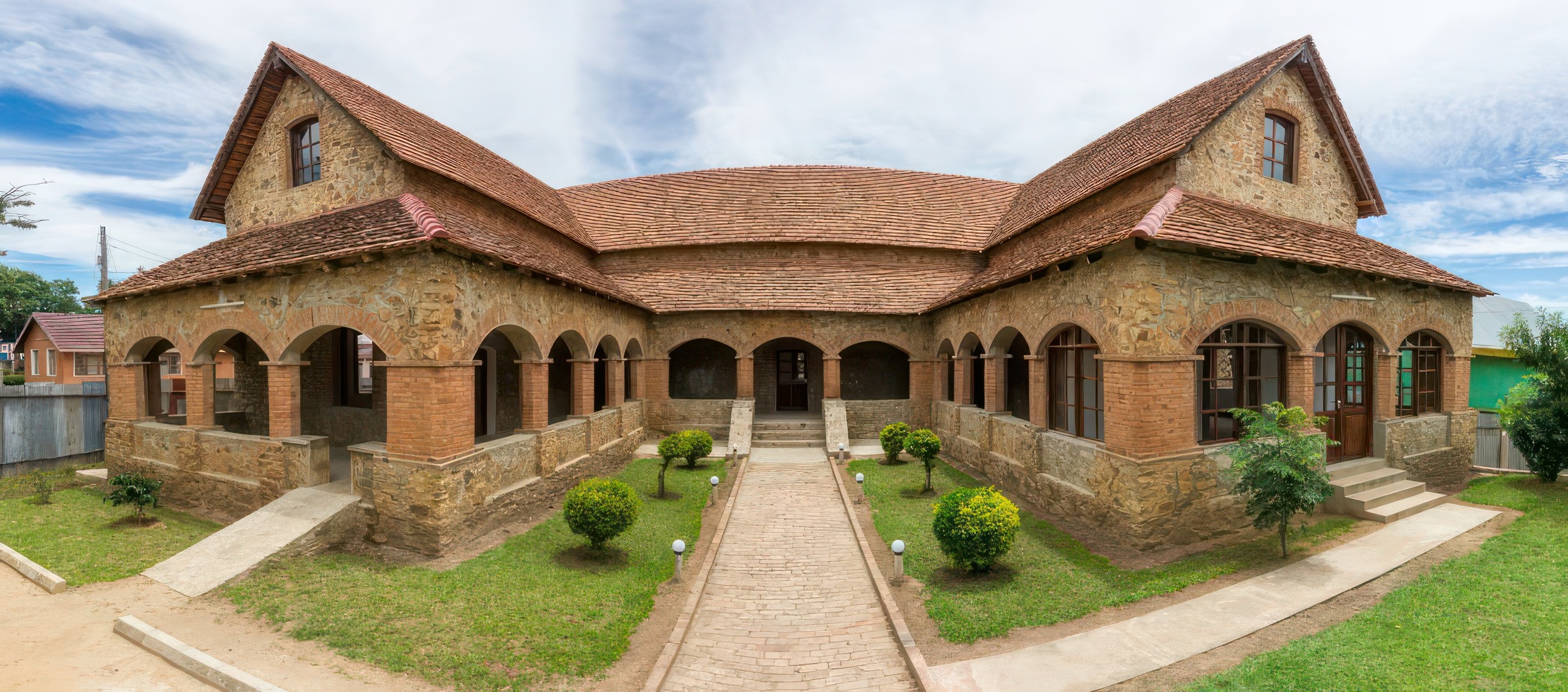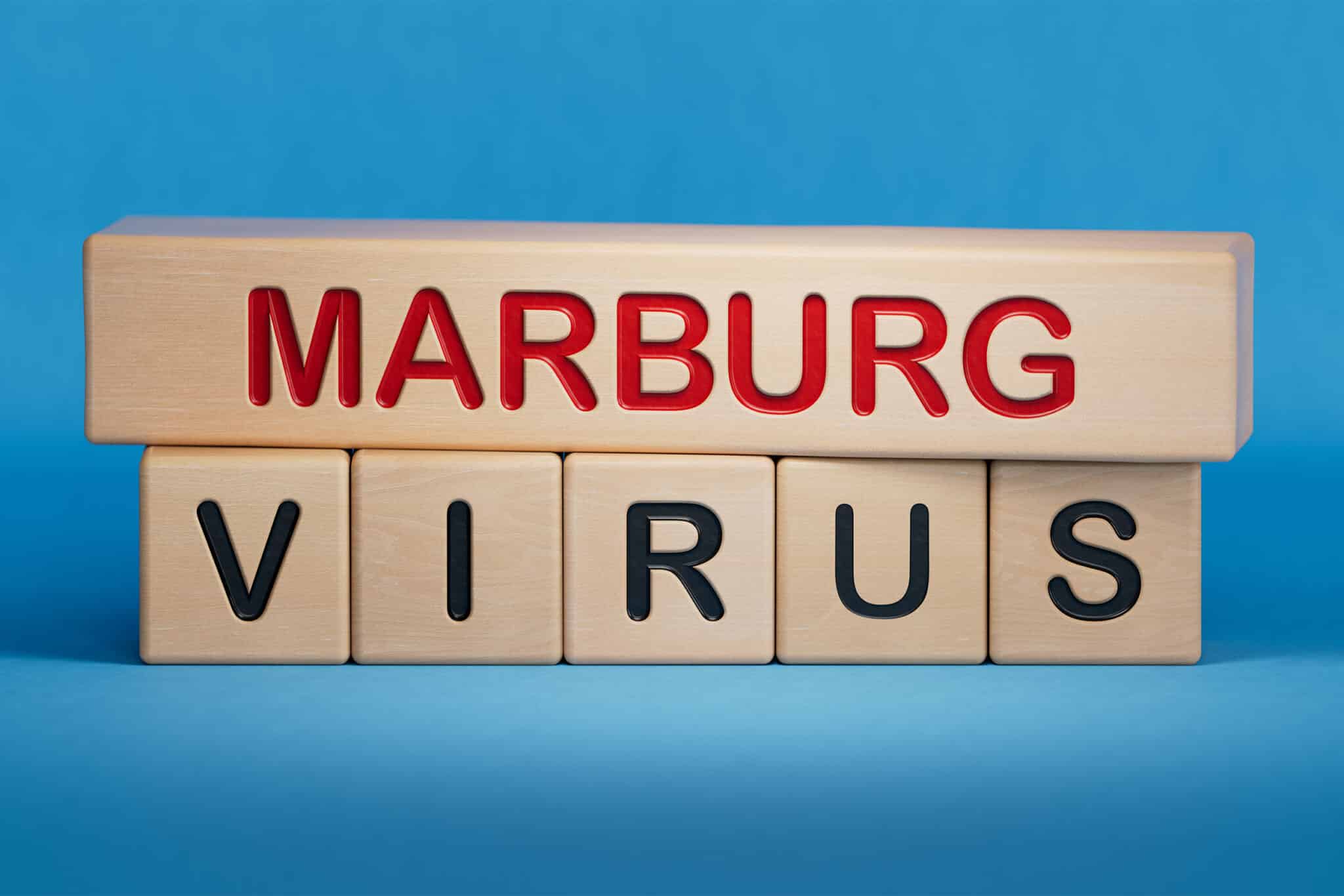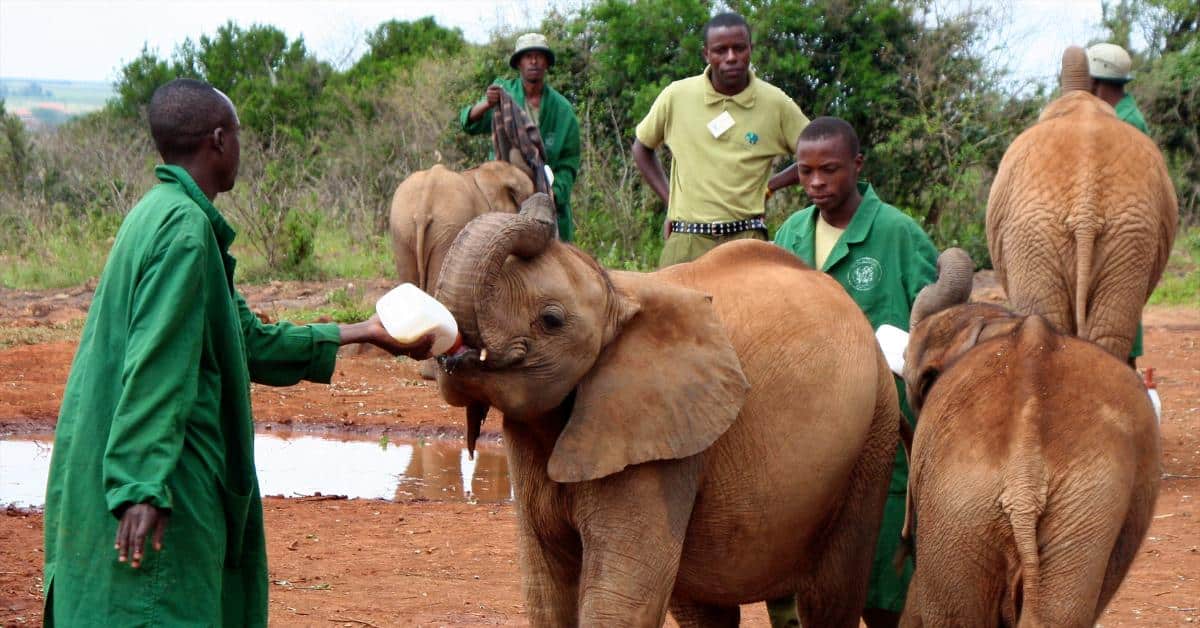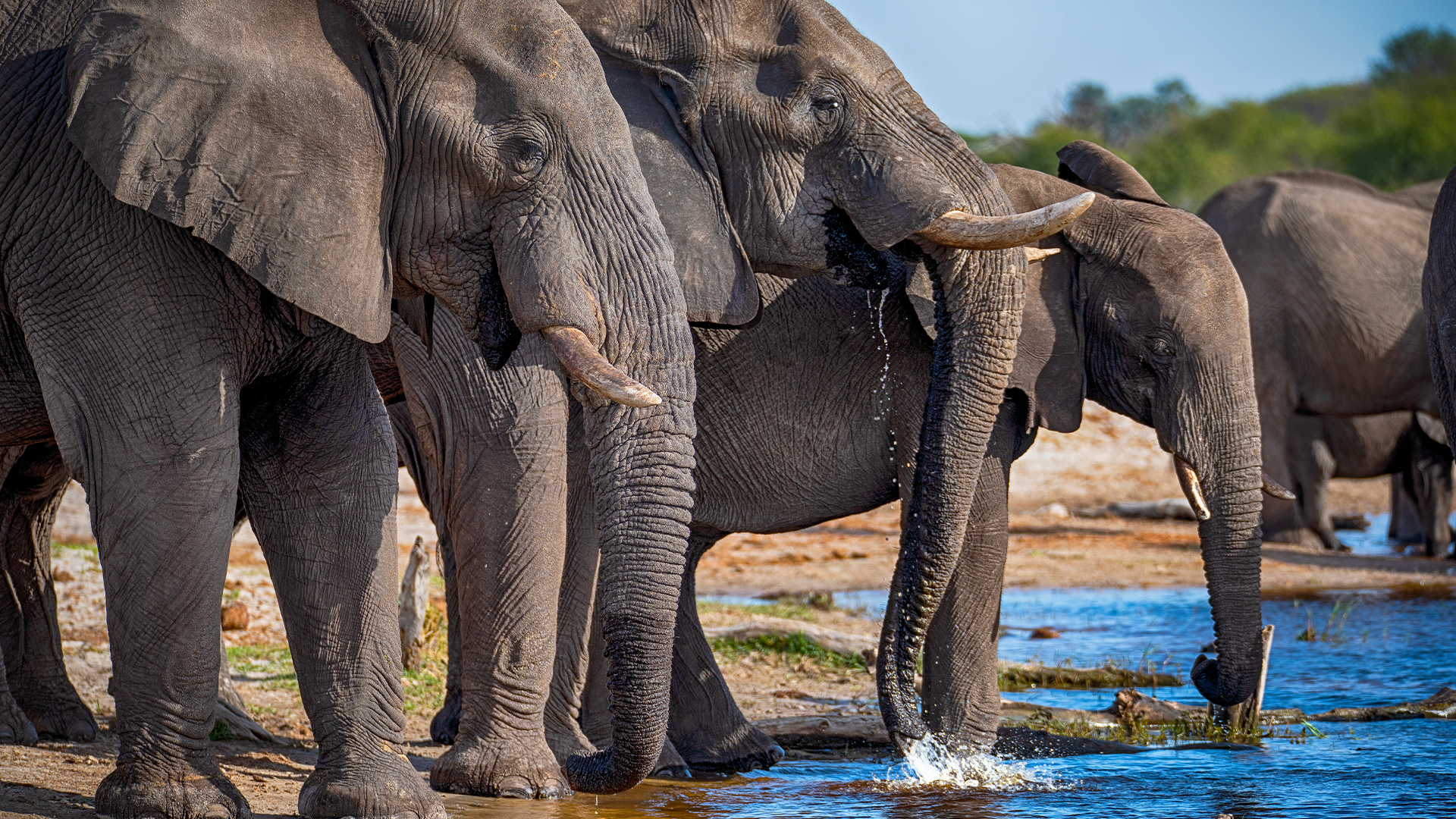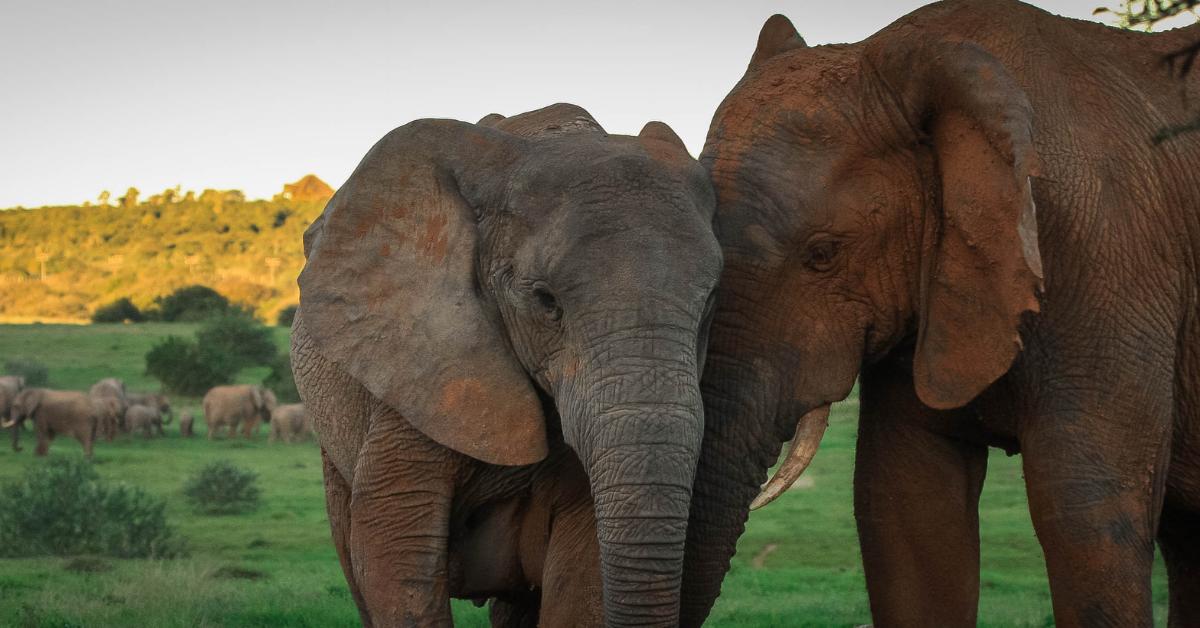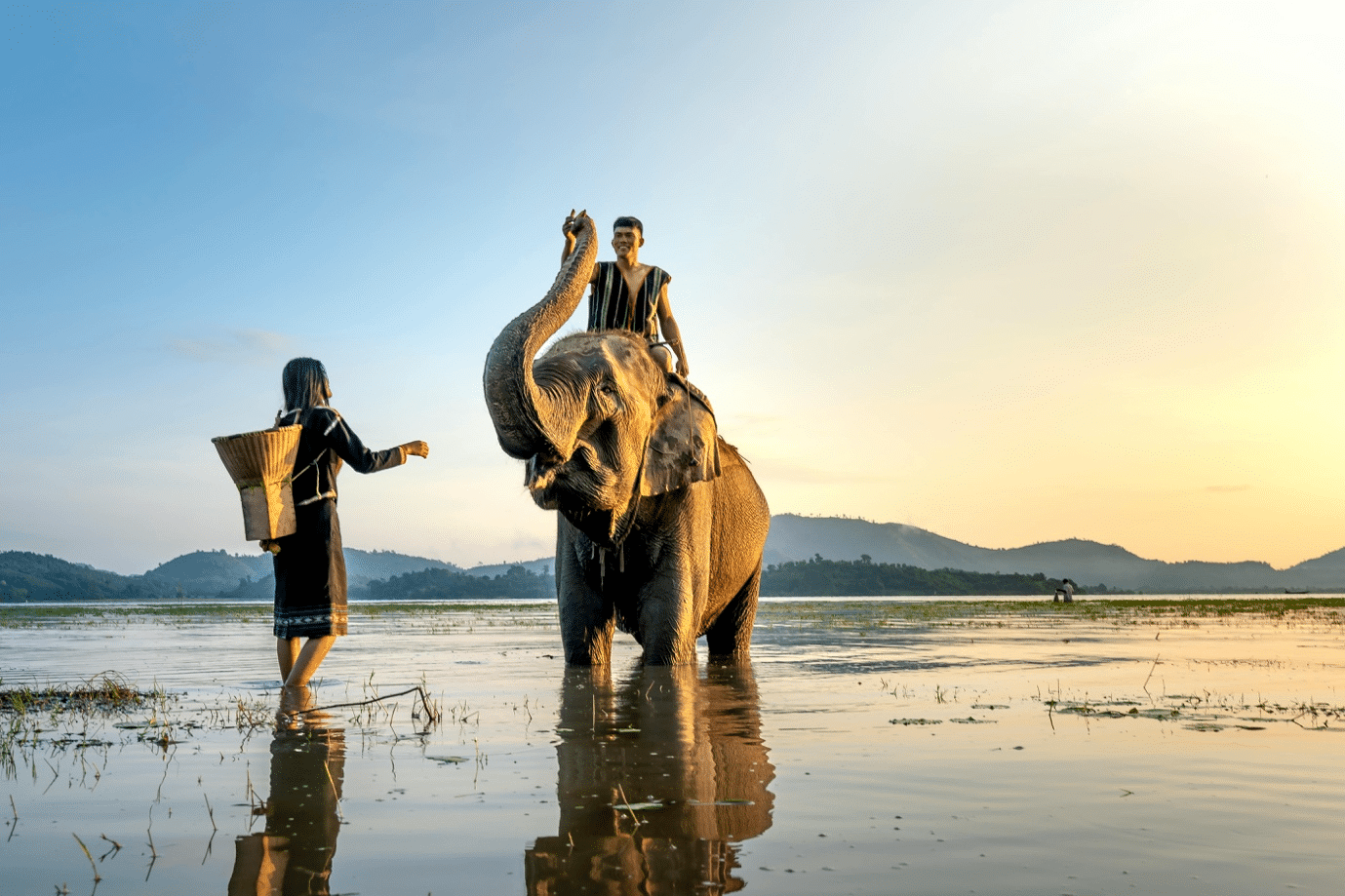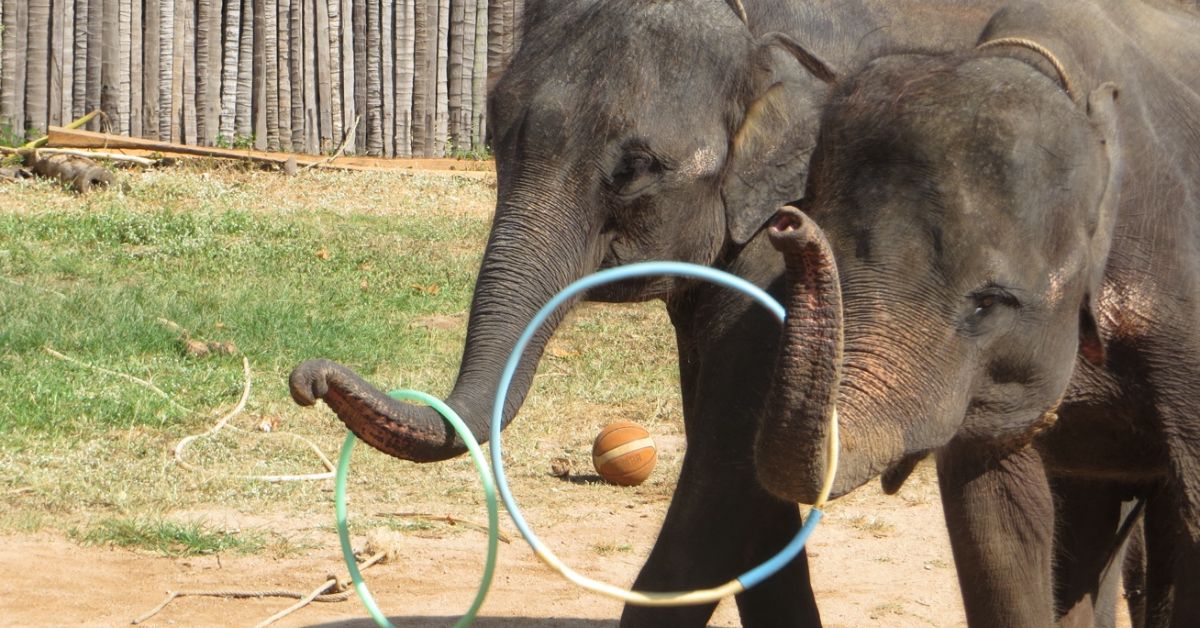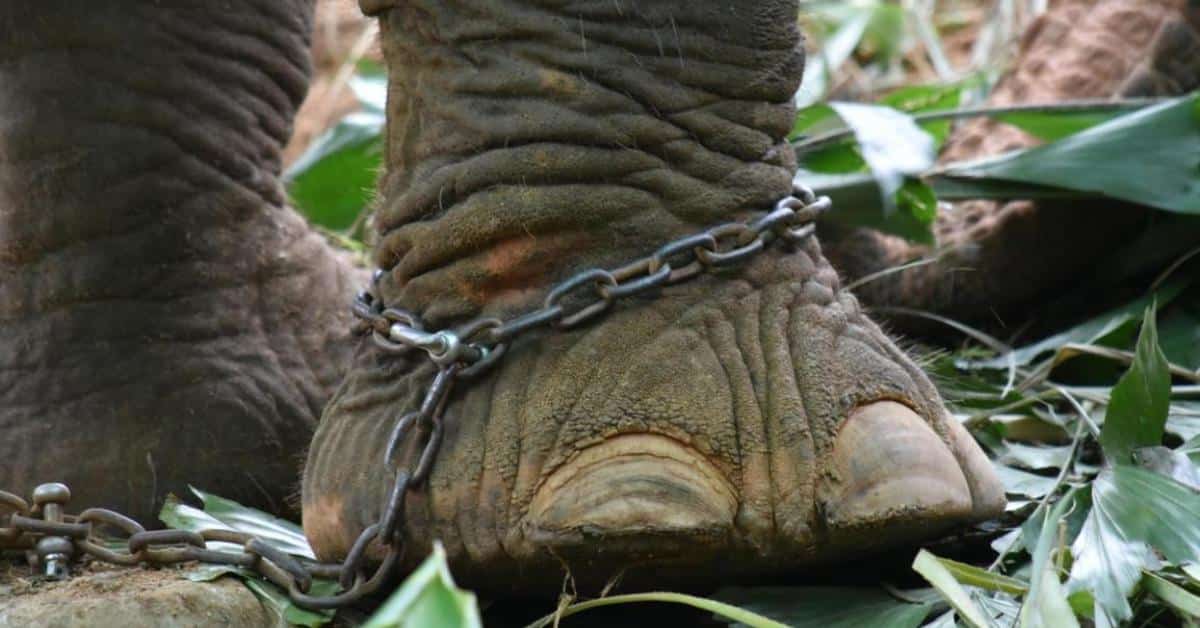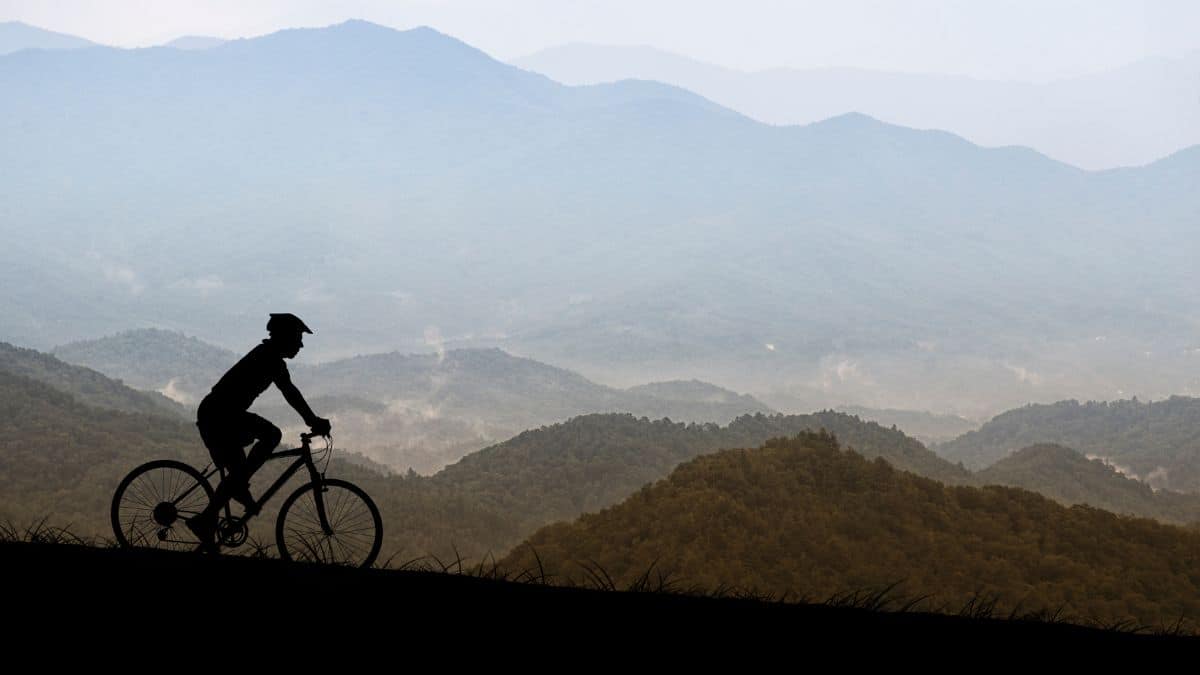Choosing suitable accommodation is essential when planning your trek along the Marangu Route on Mount Kilimanjaro.
The Marangu Route offers varied terrain before reaching the summit, including lush rainforests, moorlands, and a unique alpine desert.
The availability of accommodation options can enhance your comfort and overall experience during the trek. In this guide, we will explore the various options for accommodation along the Marangu Route in the year 2025/2026.
Marangu Gate
Reaching Kilimanjaro National Park is relatively convenient, with several transportation options available. Here are some ways to arrive at this captivating destination:
The Marangu Gate serves as the official starting point of the Marangu Route, making it an essential location for trekkers embarking on their Mount Kilimanjaro adventure. While there are no formal accommodation options at the gate, the nearby town of Marangu offers various accommodations to accommodate different budgets and preferences.
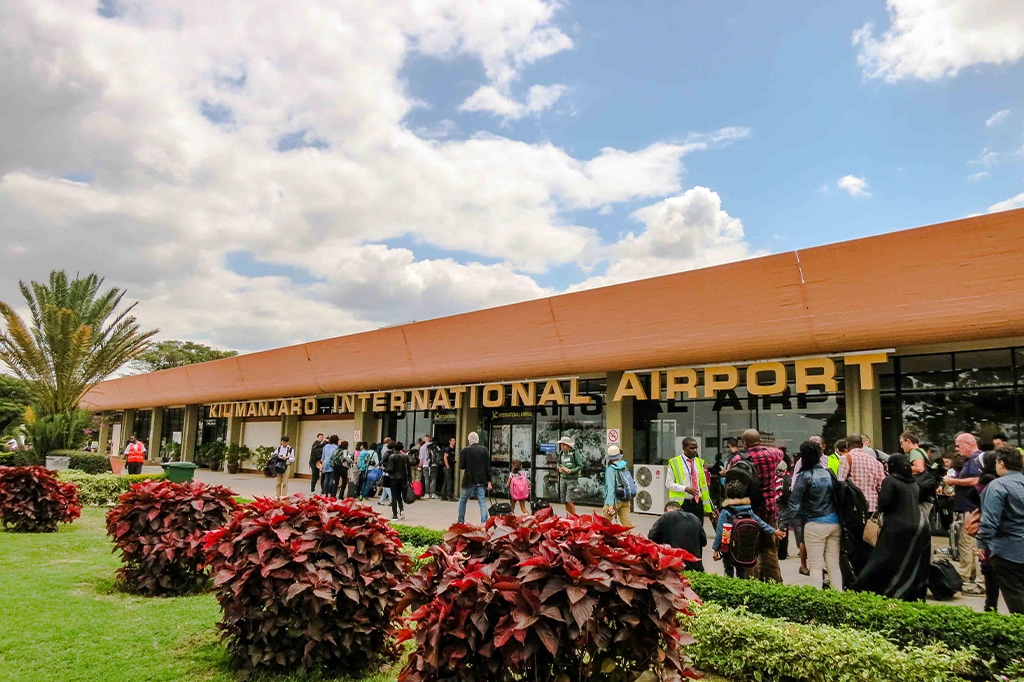
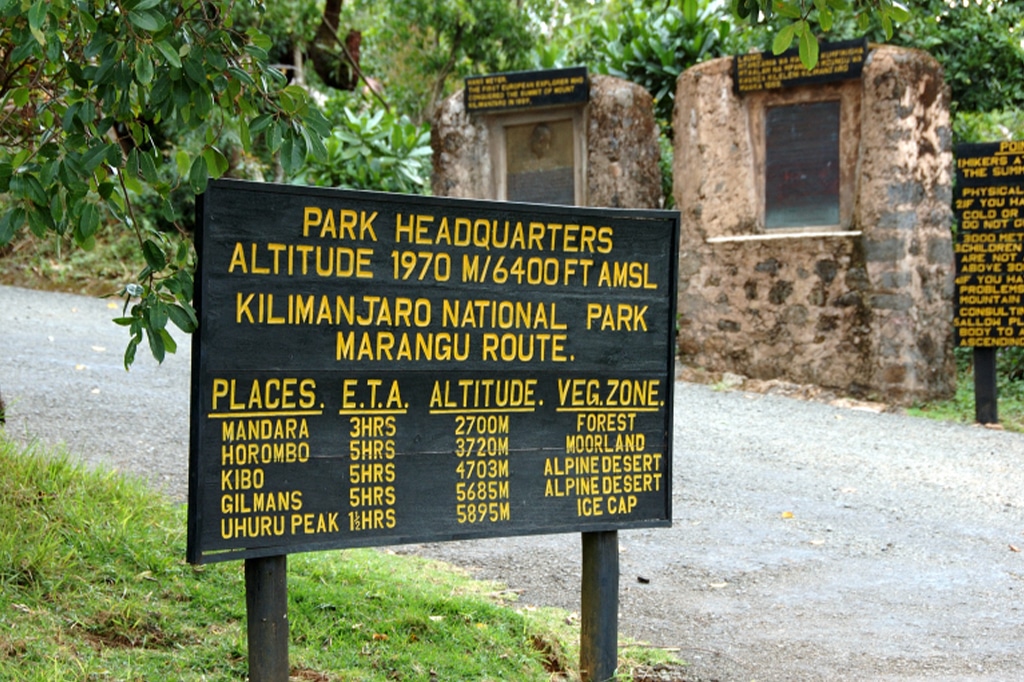
Kilimanjaro International Airport (JRO) is the nearest major airport to Marangu, and it is well-connected to multiple international destinations. Visitors can hire a private transfer from the airport or take a taxi to Marangu.
Staying in Marangu before beginning your trek can provide several benefits. First, it allows you to acclimate to the local environment and adjust to the time zone if you have traveled from a different location.
This is especially important for international travelers who may experience jet lag.
Mandara Hut
After starting your trek at the Marangu Gate, your first overnight stop along the Marangu Route is the Mandara Hut. Situated at an elevation of 2,700 meters (8,858 feet), Mandara Hut provides much-needed rest for trekkers before continuing their ascent.


Mandara Hut is one of the basic huts the Kilimanjaro National Park Authority provides. These huts are designed to accommodate climbers and offer a simple sleeping arrangement to ensure a comfortable stay.
The huts are typically shared among multiple trekkers, creating a communal atmosphere and providing an opportunity to interact with fellow climbers from around the world.
Horombo Hut
Continuing your ascent along the Marangu Route, you will reach Horombo Hut, the second overnight stop on your journey to Mount Kilimanjaro’s summit. Located at 3,720 meters (12,204 feet), Horombo Hut offers a higher altitude experience and more spacious accommodation than Mandara Hut.
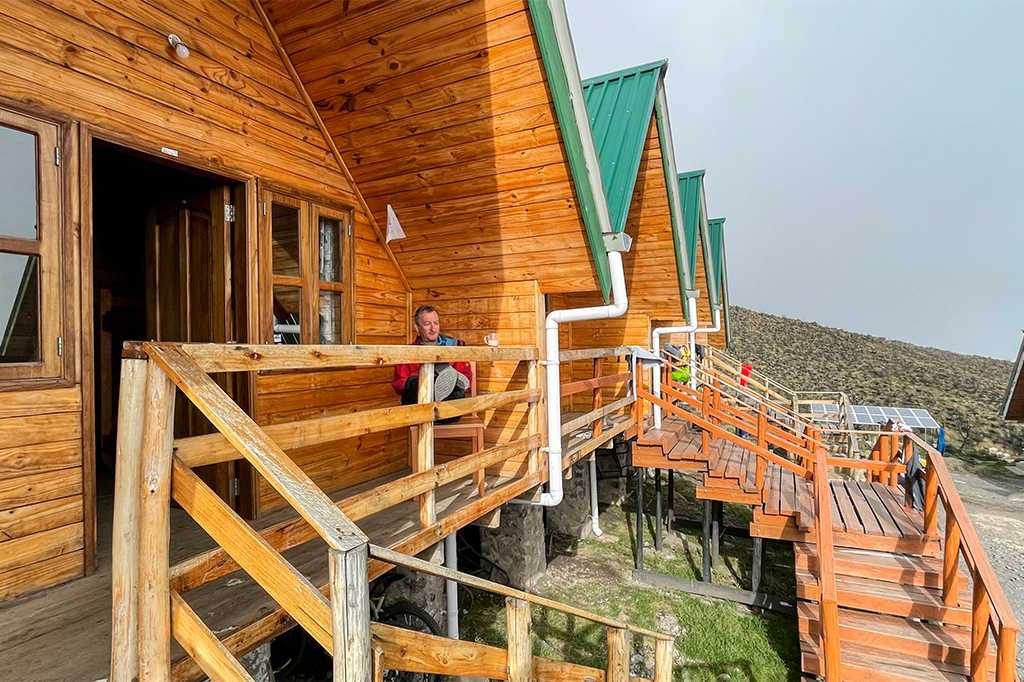
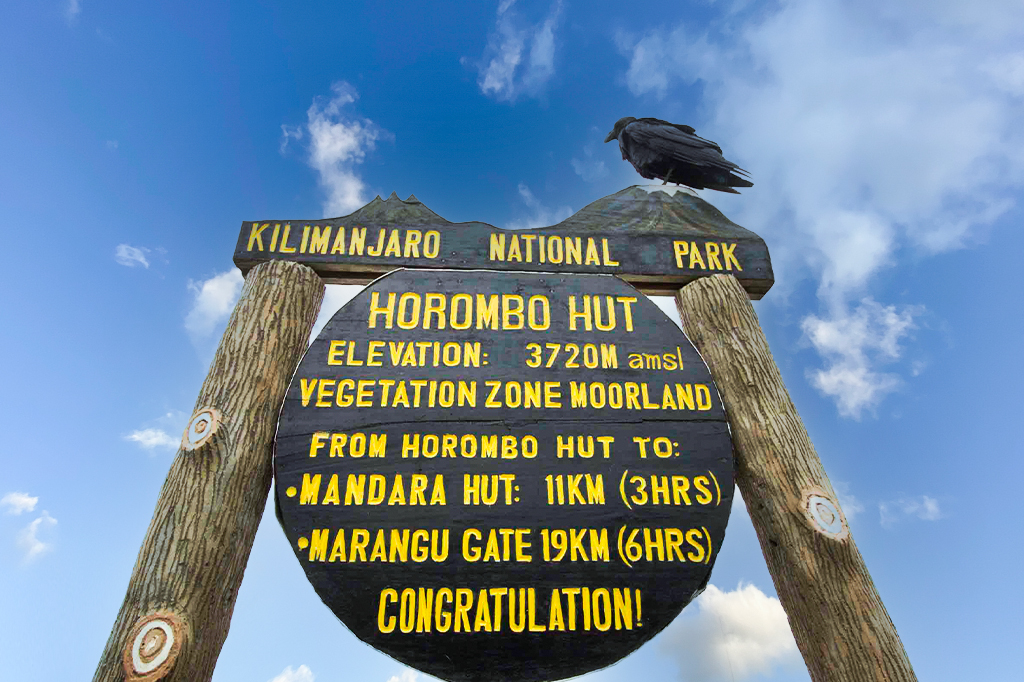
The 6-day Marangu Route package includes acclimatization at Horombo Hut, providing trekkers a better chance of success and a more comfortable experience.
Horombo Hut like Mandara Hut, is a primary accommodation facility the Kilimanjaro National Park Authority provides. While the huts at Horombo are still relatively simple, they offer more comfort and space for trekkers to relax and unwind after hiking.
The huts are typically shared among climbers, allowing for community and camaraderie among fellow trekkers. You will find bunk beds with mattresses inside the huts, similar to those at Mandara Hut.
These beds provide a comfortable resting place for trekkers, allowing you to replenish your energy for the next leg of the journey. As with Mandara Hut, bringing your sleeping bag or arranging for one through your tour operator is vital to ensure a cozy and warm night’s sleep.
Kibo Huts
Located at an impressive altitude of 4,703 meters (15,430 feet), Kibo Huts marks the final overnight stop on the Marangu Route before the exhilarating summit push. Situated at the base of Mount Kilimanjaro’s iconic peak, Kibo Huts serve as the launching point for climbers to gather their strength and prepare for the challenging ascent to the summit, Uhuru Peak.
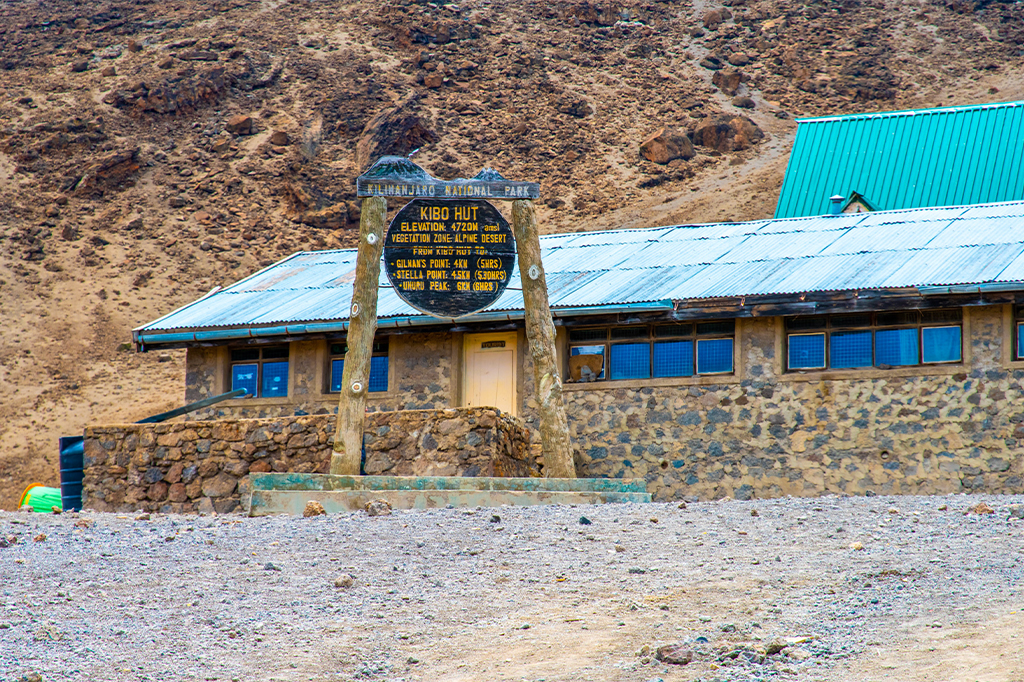
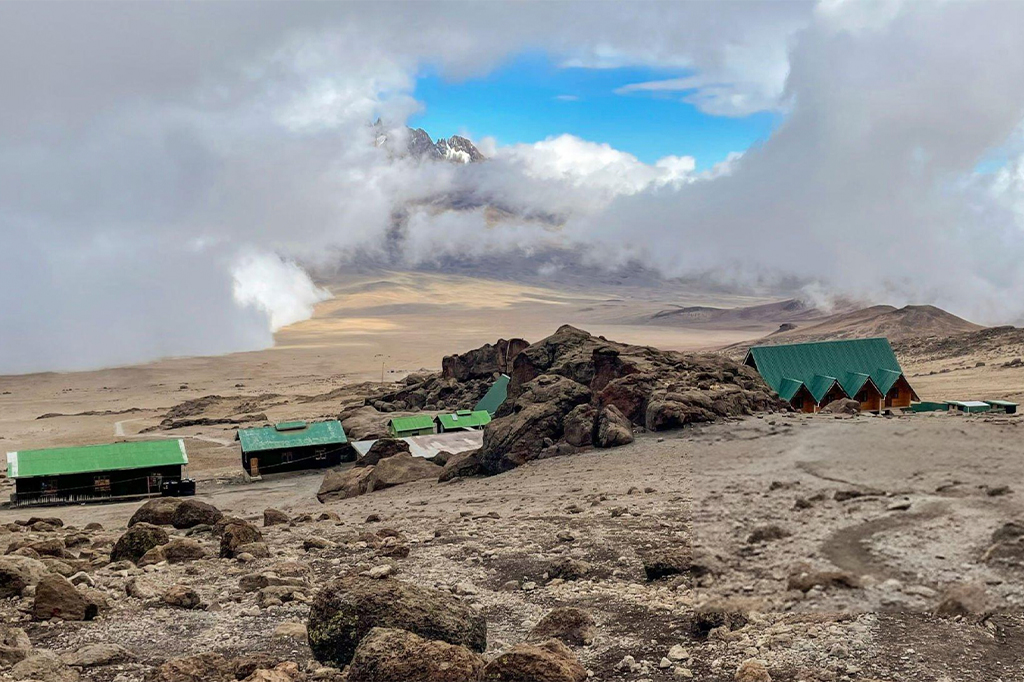
Similar to the huts at Mandara and Horombo, the accommodation facilities at Kibo Huts are basic and shared among climbers. As the altitude increases and the environment becomes more challenging, you must manage your expectations regarding the available facilities.
The huts at Kibo provide a sheltered place for climbers to rest, recuperate, and regain their energy before embarking on the final leg of the journey. Inside the huts, you will find bunk beds with mattresses, offering a relatively comfortable sleeping arrangement considering the climb’s high altitude and demanding physical exertion.
As you approach Kibo Huts, the air becomes thinner, and the conditions become more challenging. Listening to your body and recognizing signs of altitude sickness is essential.
Take the time to acclimate and rest, ensuring you are physically and mentally prepared for the demanding summit push.
Tips for Choosing Accommodation


Choosing suitable accommodation along the Marangu Route is essential to planning your trek. Before starting the Marangu Route trek, it is necessary to have thorough travel insurance that includes coverage for high-altitude activities and hiking at elevated altitudes. Here are some valuable tips to consider when selecting your lodging options:
1. Book in advance
Experience the ultimate luxury in West Kilimanjaro at one of the exquisite safari lodges. These lodges provide comfortable rooms, exceptional service, and stunning views of the surrounding wilderness.
Many tour operators offer upgraded accommodation options for an additional cost. These private tents provide more personal space and may offer other amenities such as thicker mattresses, cozy bedding, and even private toilet facilities.
Assess your budget and comfort preferences to make an informed decision about the type of accommodation that best suits your needs.
2. Consider comfort vs. budget
The huts provided by the Kilimanjaro National Park Authority along the Marangu Route are basic but functional. If you prioritize comfort and privacy, you may want to explore the option of private tented accommodation.
Many tour operators offer upgraded accommodation options for an additional cost. These private tents provide more personal space and may offer additional amenities such as thicker mattresses, cozy bedding, and even private toilet facilities.
Assess your budget and comfort preferences to make an informed decision about the type of accommodation that best suits your needs.
3. Research tour operators
Tour operators may offer various accommodation options and packages along the Marangu Route. Take the time to research and compare the services provided by other operators. The Marangu Route is the only route that allows ascending and descending along the same path.
Look for reputable operators with positive reviews and a track record of delivering high-quality services. Consider the types of accommodation they offer, the level of customer service, and any additional amenities or perks included in their packages.
By conducting thorough research, you can choose a tour operator that aligns with your preferences and ensures a comfortable and enjoyable experience on your trek.
4. Communicate dietary needs
If you have specific dietary needs or restrictions, it is essential to communicate this information to your tour operator in advance. This allows them to make the necessary arrangements to accommodate your dietary requirements during your stay in the huts or tents.
Whether you follow a vegetarian, vegan, gluten-free, or other specialized diet, informing your tour operator ensures that the meals provided during your trek suit your needs. Clear communication regarding your dietary preferences will provide a more enjoyable and hassle-free experience on the Marangu Route.
Conclusion
Choosing the right accommodation along the Marangu Route is crucial for a comfortable and enjoyable trekking experience. Whether you opt for the basic huts provided by the Kilimanjaro National Park Authority or choose the option of private tented accommodation, it’s essential to consider your budget, comfort preferences, and booking in advance.
Whichever option you choose, the accommodation along the Marangu Route will provide a place to rest, recharge, and prepare for the exhilarating journey to the summit of Mount Kilimanjaro.
Frequently Asked Questions (FAQs)
What makes the Marangu Route unique compared to other routes for climbing Mount Kilimanjaro?
The Marangu Route is distinct due to its gradual climb and the fact that it offers hut accommodation throughout the trek. It is often called the “Coca-Cola Route” due to its popularity and relative ease compared to other, more challenging routes.
How does the Marangu Route approach Mount Kilimanjaro?
The Marangu Route approaches Mount Kilimanjaro from the southeast. It starts at Marangu Gate and gradually ascends through diverse landscapes, including lush rainforests, moorlands, and alpine deserts, before reaching the summit.
Is the Marangu Route suitable for beginners?
Yes, the Marangu Route is considered one of the more accessible routes for beginners due to its gradual climb and hut accommodations, making it a popular choice for those with less trekking experience.
How crowded is the Marangu Route compared to other routes?
The Marangu Route tends to be one of the more crowded routes on Mount Kilimanjaro due to its popularity and reputation as the most well-established route. However, its popularity also means that it has well-maintained trails and facilities.
What is the accommodation like on the Marangu Route?
The Marangu Route offers hut accommodation at designated campsites along the ascending path. These huts provide basic amenities such as bunk beds and communal dining areas, offering a more comfortable alternative to camping in tents.
Staying in the huts also allows climbers to pack lighter and avoid carrying camping gear, making the trek less physically demanding in terms of equipment. It’s important to note that hut accommodation is limited and tends to fill quickly, so climbers should book their spots through licensed tour operators to secure their accommodation along the route.
How long does it take to climb Kilimanjaro via the Marangu Route?
The standard itinerary for climbing Kilimanjaro via the Marangu Route takes around five to six days, depending on the climber’s pace and acclimatization needs. Some tour operators may offer variations of the route with additional acclimatization days, which can help climbers adjust better to the altitude and increase their chances of reaching the summit successfully.
Climbers should choose an itinerary that allows for adequate acclimatization and rest periods to minimize the risk of altitude sickness and optimize their chances of enjoying the trekking experience.
What is the terrain like on the Marangu Route?
The terrain on the Marangu Route varies from lush rainforests in the lower elevations to alpine desert landscapes as you ascend higher. The trail is generally well-defined and maintained, with some rocky sections and steep inclines closer to the summit.
Throughout the trek, climbers will experience diverse environments and changing scenery, providing a unique perspective on Kilimanjaro’s ecological zones and natural beauty. It’s essential to be prepared for these conditions and wear appropriate footwear and clothing for comfort and safety.
What are the risks associated with climbing Kili via the Marangu Route?
As with any high-altitude trek, climbers on the Marangu Route are at risk of altitude-related illnesses such as altitude sickness. To minimize these risks, it is essential to adjust adequately, stay hydrated, and heed the guidance of your guide.
How does the Marangu Route summit climb compare to other routes?
The climb on the Marangu Route typically starts in the early morning, allowing climbers to reach Uhuru Peak, the summit of Kilimanjaro, in time for sunrise. The final ascent involves navigating steep and rocky terrain but does not require technical climbing skills.
Climbers are often rewarded with spectacular panoramic views as they ascend to the highest point in Africa, making the effort and early start well worth it for the unforgettable experience.
What is the best time of year to climb Kilimanjaro via the Marangu Route?
The best period to climb Kilimanjaro via the Marangu Route is during the dry seasons, typically from January to mid-March and June to October. These months offer clearer skies and more stable weather conditions, making for a safer and more enjoyable trek.
It’s essential to consider booking well in advance for these peak seasons, as they are popular among climbers seeking optimal climbing conditions and breathtaking views from the summit.
How do I get to the Marangu Gate starting point?
The Marangu Gate, the focal point for the Marangu Route, is accessible from Kilimanjaro International Airport (JRO), the main gateway to the region.
Many tour operators offer transportation from the airport to the gate as part of their packages, ensuring convenience and seamless transition for climbers starting their trek. Climbers should confirm transportation arrangements to ensure a smooth start to their Kilimanjaro adventure.
Are there alternative routes that intersect with the Marangu Route?
While the Marangu Route is standalone, it intersects with other routes at specific points, such as the Machame Route at the Barranco Camp. Climbers typically stick to the designated path for their trek to maintain safety and adhere to park regulations.
This intersection occasionally provides opportunities for climbers to interact with others on different routes, sharing experiences and insights from their journeys up Kilimanjaro.
What are the highlights of the Marangu Route trek?
Highlights of the Marangu Route trek include:
1. Passing through diverse ecosystems.
2. Encountering unique flora and fauna.
3. Experiencing stunning panoramic views from the summit of Kilimanjaro.
The hut accommodation and gradual ascent also contribute to the overall experience.
What facilities are available at Mawenzi Hut along the Marangu Route?
Mawenzi Hut is an overnight stop on the Marangu Route, providing basic amenities such as bunk beds, dining facilities, and toilets. Climbers rest there before continuing their ascent towards the summit.
How does the Marangu Route compare to other routes in terms of difficulty?
Due to its gradual climb and hut accommodation, the Marangu Route is often considered one of Kilimanjaro’s less physically demanding routes.
Nevertheless, climbers must maintain good physical fitness and be well-prepared for trekking at high altitudes. Proper acclimatization, staying hydrated, and following the guidance of experienced guides are crucial for a safe and successful ascent.

